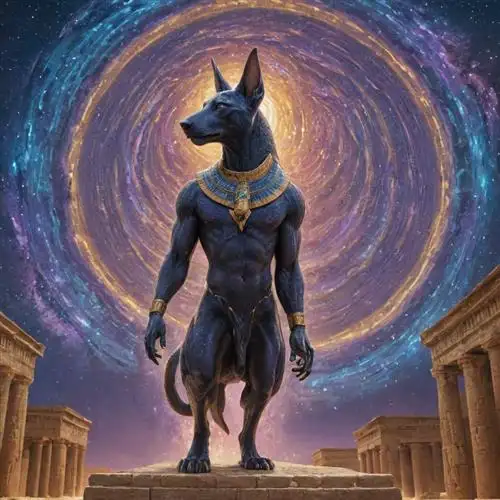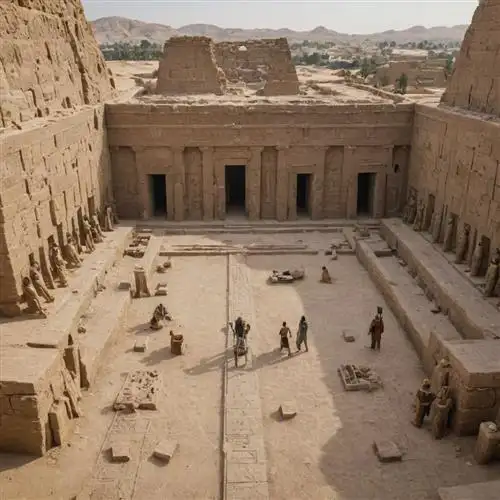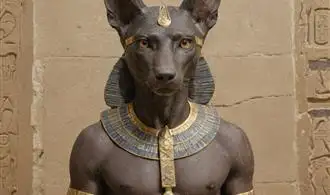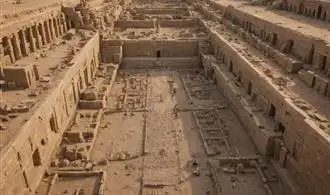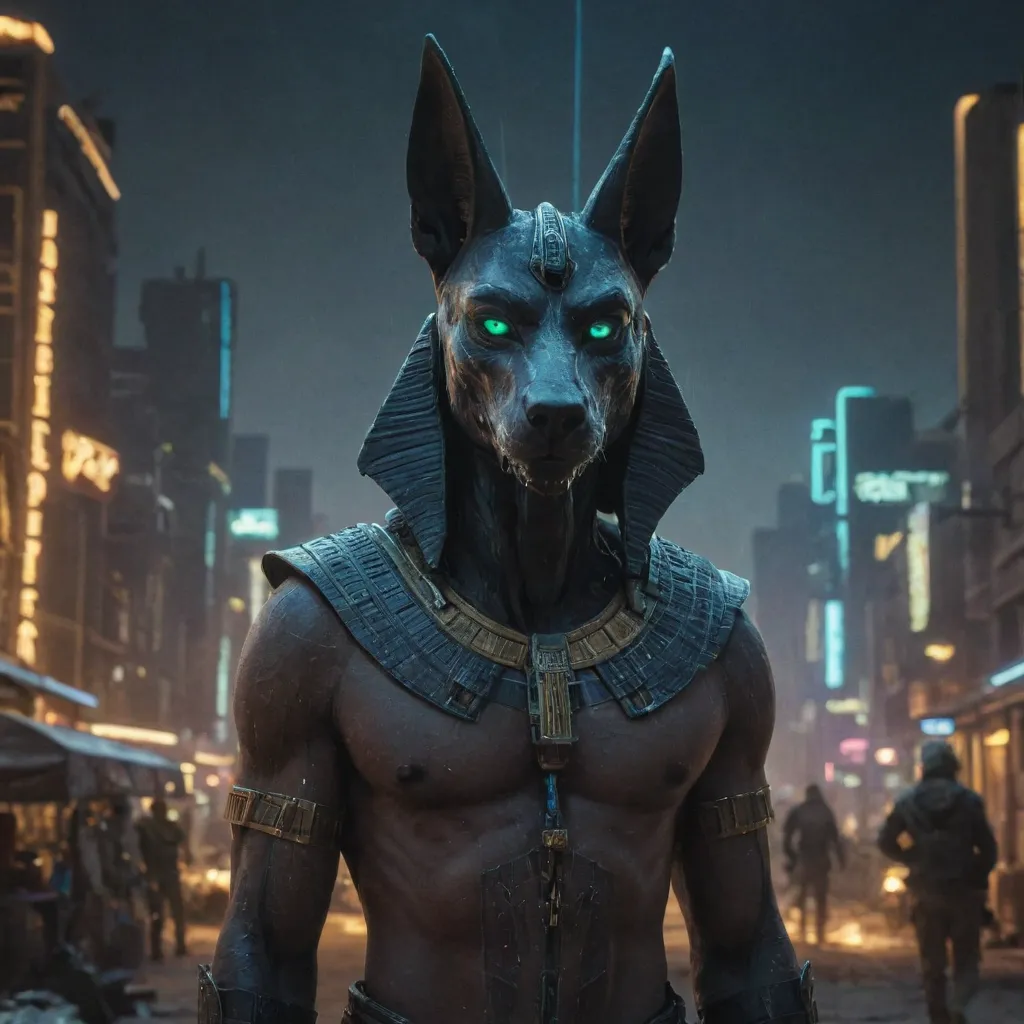
The Origins of Anubis
Anubis, the enigmatic jackal-headed deity, has captivated the imagination of scholars and enthusiasts alike for centuries. Tracing the roots of this profound figure reveals a rich tapestry of ancient Egyptian mythology and the evolution of religious beliefs. As the god of embalming and the protector of the dead, Anubis played a pivotal role in the complex funerary rituals and afterlife beliefs of the Egyptians.
The origins of Anubis can be traced back to the predynastic period of ancient Egypt, where various animal deities were revered for their strength, cunning, and connections to the natural world. The jackal, in particular, held a special significance, as these adaptable canines were often observed prowling the desert landscapes near burial sites, leading to their association with the realm of the dead.
One of the earliest known references to Anubis can be found in the Pyramid Texts, the ancient funerary inscriptions dating back to the Old Kingdom (c. 2686-2181 BCE). In these texts, Anubis is described as the "He who is in the Place of Embalming," underscoring his role in the mummification process and the preparation of the deceased for the afterlife.
The precise reason for Anubis's jackal-headed form has been the subject of much scholarly debate. Some researchers suggest that the jackal's acute senses and ability to navigate the desert terrain made it an apt symbolic representation of the god's responsibilities in guiding the dead through the perilous journey to the afterlife. Others posit that the jackal's natural inclination to scavenge near burial sites further solidified its connection to the realm of the dead.
As Egyptian mythology evolved, Anubis's role expanded beyond the realm of embalming and funerary rites. He was also revered as a protector of the dead, responsible for weighing the hearts of the deceased against the feather of Ma'at, the goddess of truth and justice, in the final judgment before the afterlife. This pivotal role in the afterlife journey cemented Anubis's status as a central figure in the Egyptian pantheon.
The worship of Anubis was widespread throughout ancient Egypt, with numerous temples and shrines dedicated to the god across the land. His iconography, featuring the distinct jackal head and human body, became a ubiquitous symbol in funerary art and architecture, adorning coffins, sarcophagi, and various funerary objects.
The Roles and Responsibilities of Anubis
Anubis, the ancient Egyptian god of the dead, played a pivotal role in the complex and fascinating pantheon of deities. As the guardian of the necropolis and the embalming process, Anubis held immense responsibility in guiding the souls of the departed through the treacherous journey to the afterlife.
At the heart of Anubis' duties was the crucial task of overseeing the mummification of the deceased. He would ensure the proper preservation of the body, a critical step in the Egyptian belief of the soul's continued existence after death. Anubis would meticulously oversee the embalming rituals, from the removal of the internal organs to the wrapping of the body in linen. This attention to detail was essential, as the state of the physical form was believed to directly impact the soul's ability to transition into the afterlife.
Beyond his role as the protector of the dead, Anubis was also responsible for weighing the heart of the deceased against the feather of truth, a final judgment that determined the individual's worthiness to enter the afterlife. This ritual, known as the "Weighing of the Heart," was a pivotal moment in the Egyptian funerary process, as it assessed the moral character of the individual and their adherence to the principles of Ma'at (harmony, justice, and truth).
Anubis was also revered as the guardian of cemeteries and the protector of graves. He was believed to watch over the necropolis, ensuring the sanctity of the resting places of the dead and safeguarding the souls of the departed from any malevolent forces. This role was particularly crucial in the ancient Egyptian mindset, as the afterlife was seen as a continuation of earthly existence, and the proper care and protection of the deceased was paramount.
In addition to his primary responsibilities, Anubis was also associated with various other aspects of the Egyptian funerary rites and beliefs. He was often depicted as a jackal-headed deity, a symbolic representation of his connection to the desert and the process of decomposition. This iconography was believed to reflect Anubis' ability to navigate the liminal space between the world of the living and the realm of the dead.
The Iconography and Symbolism of Anubis
Anubis, the jackal-headed Egyptian deity, is one of the most iconic and significant figures in ancient Egyptian mythology. His unique iconography and rich symbolic meaning have captivated scholars and enthusiasts alike, offering a profound insight into the beliefs and practices of this ancient civilization. As the god of the dead, embalming, and the afterlife, Anubis' visual representation and the symbols associated with him hold immense significance in understanding the ancient Egyptian worldview.
The jackal-headed form of Anubis is one of the most recognizable aspects of his iconography. The jackal, a cunning and adaptable canine, was closely associated with the Egyptian deserts and the liminal spaces between the living and the dead. This symbolic connection positioned Anubis as the guardian of the necropolis, the realm of the dead, and the protector of the mummification process. The jackal's keen senses and ability to navigate the shadowy realms of the afterlife made it an apt representation of Anubis' role as the guide and gatekeeper for the deceased.
Beyond the jackal-headed form, Anubis' iconography often features him holding specific objects or engaging in specific rituals. One of the most common depictions shows Anubis kneeling beside a mummy, performing the ritual of embalming or guiding the deceased through the afterlife. This image symbolizes Anubis' role as the patron of mummification and the protector of the dead, ensuring a safe passage to the afterlife.
Another significant symbol associated with Anubis is the scale or balance. In the ritual of the "Weighing of the Heart," Anubis was responsible for weighing the heart of the deceased against the feather of truth, determining the moral worthiness of the individual. This symbolic act underscores Anubis' role as the judge of the dead, ensuring that the souls of the departed were judged fairly and their actions were in alignment with the principles of Ma'at, the cosmic order.
The color black, often associated with Anubis, also holds deep symbolic meaning. Black was seen as the color of the rich, fertile soil of the Nile Delta, as well as the color of the decomposing flesh. This duality represented Anubis' dual nature – the giver of life and the guardian of the dead. The color black also symbolized the mystery and transformative power of the underworld, over which Anubis presided.
The Influence of Anubis in Ancient Egyptian Culture
Anubis, the jackal-headed deity, was a pivotal figure in the ancient Egyptian pantheon, holding a significant influence over the religious and cultural landscape of the time. As the god of the dead, embalming, and the afterlife, Anubis played a crucial role in the complex beliefs and rituals surrounding death and the journey to the afterlife.
One of the primary ways Anubis influenced ancient Egyptian culture was through his role in the mummification process. As the patron deity of embalmers, Anubis was responsible for overseeing the intricate and sacred rites involved in preserving the body for the afterlife. The jackal-headed figure was often depicted standing guard over the deceased, ensuring the proper preparation and protection of the body during this critical transition.
The association of Anubis with the afterlife also had a profound impact on ancient Egyptian funerary practices and beliefs. As the guardian of the necropolis and the weigher of the heart during the judgment of the dead, Anubis was instrumental in the successful passage of the deceased into the afterlife. This belief system shaped the elaborate tombs, burial rituals, and funerary offerings that were a hallmark of ancient Egyptian culture.
Furthermore, Anubis' connection to the underworld and the realm of the dead made him an integral figure in the intricate web of Egyptian mythology and cosmology. His role in the Osirian cycle, where he assisted in the resurrection of Osiris, the lord of the dead, further solidified his importance within the Egyptian pantheon and the broader cultural understanding of the afterlife.
The influence of Anubis extended beyond the religious sphere and into the realms of art and iconography. The jackal-headed deity was frequently depicted in Egyptian art, appearing on tomb walls, sarcophagi, and various funerary objects. These representations not only served a religious purpose but also played a role in the visual language and symbolic identity of ancient Egyptian culture.
Modern Interpretations and Representations of Anubis
In the modern era, Anubis, the ancient Egyptian jackal-headed deity associated with death and mummification, has continued to captivate the imagination of artists, scholars, and the general public alike. His enduring legacy has manifested in a diverse array of interpretations and representations, reflecting the ever-evolving cultural and artistic sensibilities of our time.
One of the most prominent modern interpretations of Anubis can be found in the realm of popular culture. The jackal-headed god has become a ubiquitous figure in various media, from comic books and video games to film and television. In these depictions, Anubis is often portrayed as a powerful, enigmatic, and sometimes menacing figure, serving as a guardian of the dead or a harbinger of the afterlife. This contemporary interpretation has helped to reinvigorate interest in ancient Egyptian mythology and introduce Anubis to a wider, global audience.
Beyond the realm of popular culture, Anubis has also been the subject of scholarly and artistic exploration. In the academic world, researchers and Egyptologists have delved deeper into the historical and cultural significance of the deity, shedding light on his role in ancient funerary practices, his symbolic associations with the transition between life and death, and his place within the complex pantheon of Egyptian deities. These insights have informed and inspired artistic representations that seek to capture the essence of Anubis and his multifaceted legacy.
In the realm of visual arts, Anubis has been a source of inspiration for countless artists, who have interpreted the deity through a variety of mediums, including sculpture, painting, and digital art. These representations often strive to capture the duality of Anubis, depicting him as both a protector and a psychopomp, guiding the souls of the deceased to the afterlife. Some artists have also sought to recontextualize Anubis within modern or hybrid mythological frameworks, exploring the ways in which this ancient Egyptian deity can be reimagined and reinterpreted for contemporary audiences.
The enduring fascination with Anubis has also extended to the realm of spirituality and alternative belief systems. In certain New Age and Pagan communities, Anubis is revered as a deity associated with death, transformation, and the mysteries of the afterlife. These modern interpretations often emphasize the deity's role as a guide and protector, offering solace and guidance to those grappling with the complexities of mortality and the transition to the next life.

